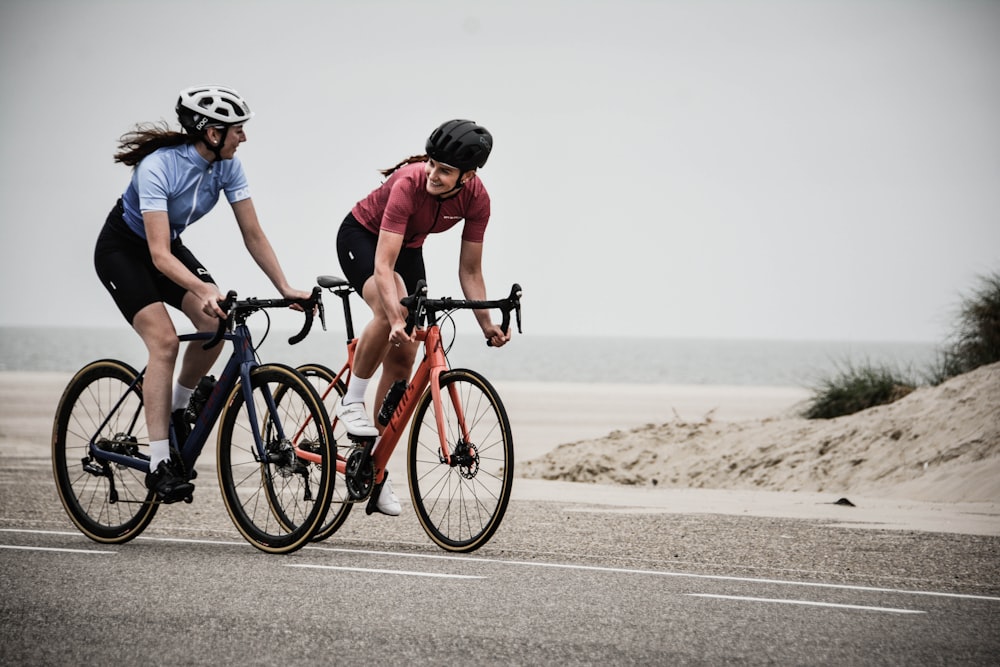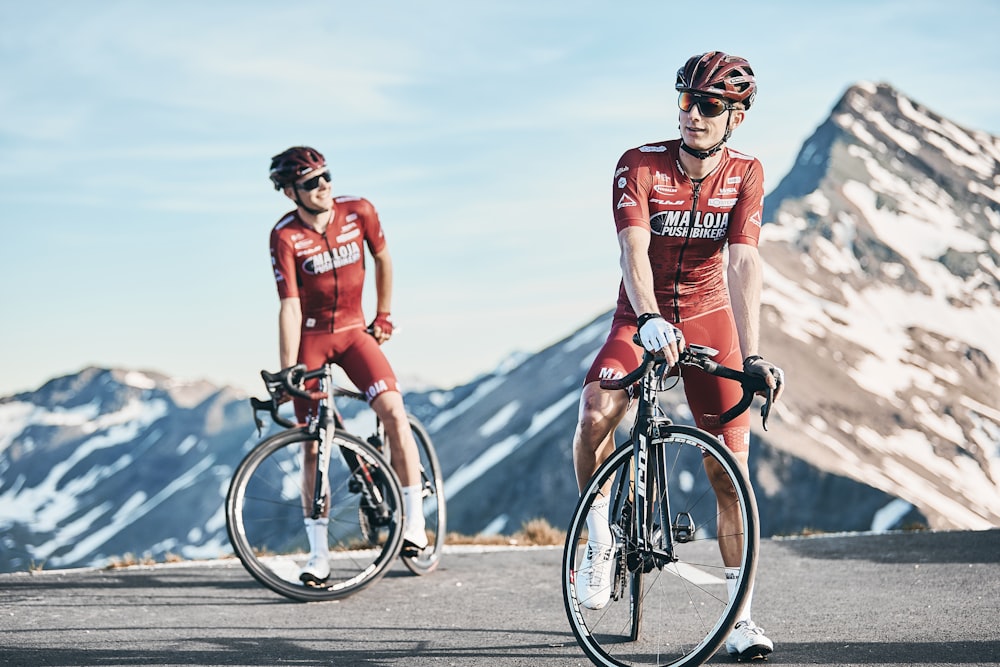Cycling: Types, benefits and Gears
Cycling, a simple yet profoundly impactful activity, has long been celebrated for its numerous benefits, ranging from physical fitness to environmental sustainability. Whether you’re navigating urban streets, tackling challenging mountain trails, or leisurely cruising along scenic paths, cycling offers a versatile and exhilarating experience. This article explores the world of cycling, delving into its myriad advantages, diverse forms, and the joy it brings to enthusiasts worldwide.
Health Benefits of Cycling:
Image via Unsplash.com
Cardiovascular Health: Cycling is a potent cardiovascular exercise that gets the heart pumping, improving overall cardiovascular health. Regular cycling has been linked to a reduced risk of heart disease, lower blood pressure, and improved blood circulation.
Weight Management: Engaging in cycling is an effective way to burn calories and manage weight. Whether you’re commuting to work or embarking on a long-distance ride, cycling helps in shedding excess pounds and maintaining a healthy body weight.
Muscle Toning and Strength: The act of pedaling engages various muscle groups, including the quadriceps, hamstrings, calves, and glutes. This continuous motion not only tones muscles but also enhances strength, particularly in the lower body.
Low-Impact Exercise: Unlike some high-impact exercises, cycling is gentle on the joints, making it an ideal option for individuals with joint conditions or those recovering from injuries. The smooth, rhythmic motion of pedaling minimizes the risk of impact-related injuries.
Mental Well-being: Cycling is not only beneficial for physical health but also for mental well-being. The release of endorphins during exercise helps reduce stress, anxiety, and depression, promoting a positive mood and mental clarity.
Types of Cycling:
Image via Unsplash.com
Road Cycling: Road cycling is one of the most popular forms of cycling, involving riding on paved roads or highways. It ranges from casual rides for recreation to competitive racing events. Road bikes, known for their lightweight frames and thin tires, are designed for speed and efficiency on smooth surfaces.
Mountain Biking: For those seeking an adrenaline rush and a rugged adventure, mountain biking is the answer. Riding off-road trails, mountain biking involves navigating through uneven terrain, steep descents, and challenging obstacles. Mountain bikes are built with durable frames and robust tires to handle the demands of off-road riding.
Commuting and Urban Cycling: Cycling serves as an efficient and sustainable mode of urban transportation. Commuting by bike not only reduces carbon footprint but also provides a time-efficient and enjoyable way to navigate city streets. Urban cycling often involves a mix of bike lanes, shared paths, and city roads.
Touring and Long-Distance Cycling: Touring involves covering significant distances on a bike, often across cities, countries, or even continents. Long-distance cycling allows enthusiasts to explore diverse landscapes, experience different cultures, and challenge their physical endurance.
BMX and Freestyle Cycling: BMX (Bicycle Motocross) and freestyle cycling are characterized by acrobatic and stunt-oriented riding. Typically performed in skate parks or on specially designed BMX tracks, these disciplines showcase riders’ skills in aerial tricks, spins, and jumps. BMX bikes have sturdy frames and smaller wheels to withstand the rigors of freestyle riding.
Gear and Equipment:
Bicycles: The choice of a bicycle depends on the type of cycling one intends to pursue. Road bikes, mountain bikes, hybrid bikes, and specialty bikes like BMX or touring bikes cater to diverse preferences. Factors such as frame material, gearing, and tire size play a crucial role in selecting the right bike.
Helmets: Safety is paramount in cycling, and wearing a helmet is a non-negotiable aspect of responsible riding. Helmets protect the head in case of falls or accidents, reducing the risk of severe injuries.
Apparel: Comfortable and breathable cycling apparel enhances the riding experience. Padded shorts provide cushioning during long rides, while moisture-wicking jerseys help regulate body temperature.
Footwear: Cycling-specific shoes with cleats offer efficient power transfer from the legs to the pedals. For casual riders, comfortable athletic shoes or sneakers may suffice. The choice of footwear depends on the type of pedals used on the bike.
Accessories: Various accessories enhance the cycling experience. These include water bottles and hydration systems, bike lights for visibility, bike locks for security, and bike-mounted bags or panniers for carrying essentials during longer rides.
Cycling as a Sustainable Transportation Option:
Image via Unsplash.com
The growing emphasis on sustainability has propelled cycling into the spotlight as a green and eco-friendly mode of transportation. As cities grapple with traffic congestion and environmental concerns, cycling emerges as a viable solution to promote cleaner air and reduce carbon emissions.
Reducing Carbon Footprint: Unlike motorized vehicles that contribute to air pollution and greenhouse gas emissions, cycling is a zero-emission mode of transportation. Choosing a bicycle over a car for commuting significantly reduces an individual’s carbon footprint.
Urban Planning and Bike Infrastructure: Cities worldwide are recognizing the importance of promoting cycling as a means of transportation. Investments in bike lanes, cycling paths, and bike-sharing programs contribute to creating a more bike-friendly urban environment.
Health and Productivity: Encouraging it as a mode of commuting not only benefits the environment but also improves public health. Cities with cycling-friendly infrastructure witness a healthier population with lower rates of sedentary lifestyle-related diseases.
Economic Impact: The shift towards cycling-friendly urban planning has economic implications. Investments in bike infrastructure create jobs, boost local businesses, and contribute to a more vibrant and sustainable urban economy.
Events and Community:

Image via Pexels.com
Professional Cycling Races: The world of professional cycling is marked by iconic races such as the Tour de France, Giro d’Italia, and Vuelta a España. These races, known as Grand Tours, attract top cyclists from around the globe, showcasing endurance, skill, and teamwork.
Community Rides and Events: Community rides and events bring enthusiasts together, fostering a sense of camaraderie and shared passion. From charity rides to local clubs, these events provide opportunities for cyclists to connect, share experiences, and contribute to meaningful causes.
Cycling Advocacy: Advocacy groups and organizations play a crucial role in promoting it at the community and policy levels. These groups work towards creating safer infrastructure, raising awareness about benefits, and influencing policies that support it as a sustainable mode of transportation.
USEFUL LINKS:
Click here to read more
Equestrian sports: How to ride a horse







